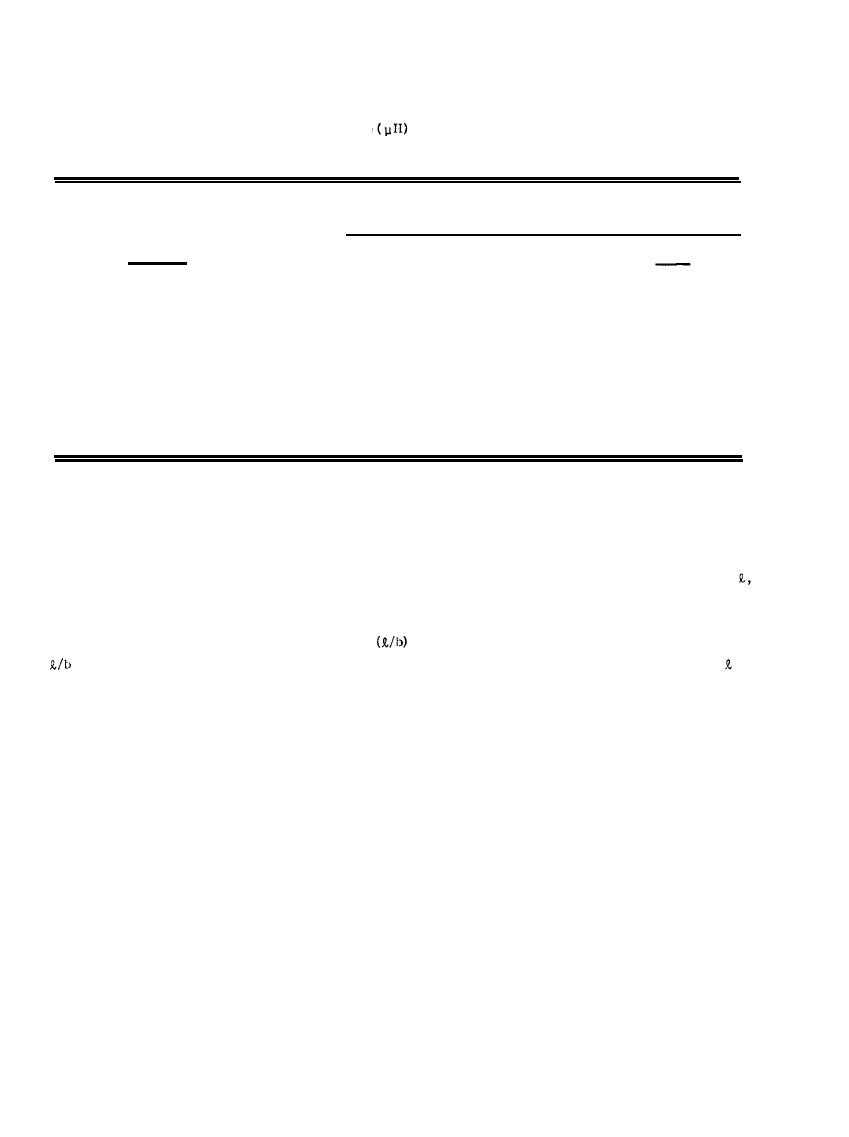

Custom Search
|
|

|
||
 MIL-HDBK-419A
Table 7-5
Calculated Inductance
of Standard Size Cable
Length
AWG No.
6 in.
12 in.
36 in.
4/0
0.098
0.238
0.914
1/0
0.108
0.259
0.977
2
0.115
0.273
1.020
4
0.122
0.287
1.063
6
0.129
0.301
1.105
10
0.144
0.329
1.189
14
0.158
0.358
1.274
Even at relatively low frequencies, the reactance of the inductive component of the bond impedance becomes
much larger than the resistance (7-5), (7-9). Thus, in the application of bonding straps, the inductive properties
as well as the resistance of the strap must be considered.
The physical size of the bonding strap is important because of its effect on the rf impedance. As the length,
of the strap is increased, its impedance increases nonlinearly for a given width; however, as the width, b,
increases, there is a nonlinear decrease in strap impedance. Figure 7-11 shows that the relative reactance of a
ratio decreases. The curve shows that a strap with an
strap decreases significantly as the length to width
ratio of 5 to 1 has an inductive reactance that is 45 percent that of a thin wire (i.e., very high ratio of to
b); a 3 to 1 ratio decreases this percentage to 38 percent. Because of this reduction in reactance, bonding
straps which are expected to provide a path for rf currents are frequently recommended to maintain a
length-to-width ratio of 5 to 1 or less, with a ratio of 3 to 1 preferred.
In many applications, braided straps are preferred over solid straps because they offer greater flexibility.
Figure 7-12 compares the measured impedance properties of a braided copper strap with those of a solid copper
strap and shows that no significant difference exists between the impedance of the braided or solid strap for
frequencies up to 10 MHz. Other tests (7-9) confirm that there is no essential difference in the rf impedance
properties of braided and solid straps of the same dimensions and made of the same materials. Because the
strands are exposed they are more susceptible to corrosion; braided straps may be undesirable for use in some
locations for these reasons. Fine braided straps also are generally not recommended because of higher
impedances at the higher frequencies as well as lower current carrying capacities.
7-21
|
 |
|
 |
||